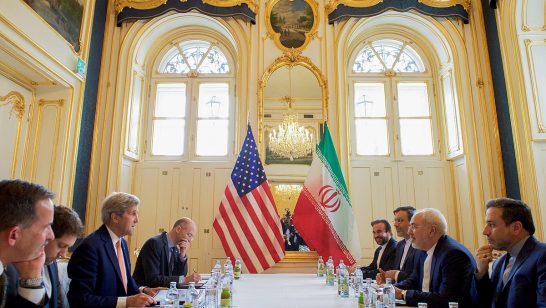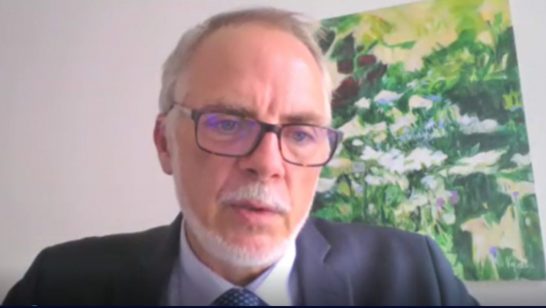
Iran, the P5+1 powers and the EU announced on 2 April that they had agreed on the main points of a deal on Iran’s nuclear energy program. This announcement came after 12 years of negotiations and a final round of high intensity talks.
In most capitals around the world the news was received with feelings of relief. There was even a nascent hope that a no longer isolated Iran might help to reduce chaos and violence in the Middle East. In Tehran itself, cars were honking.
All this euphoria may seem a little odd when you consider that the negotiating parties have not provided a complete report about the very deal that has made them all so happy. Perhaps it should be assumed that this is primarily due to the fact that there is still plenty of difficult ground to traverse before a deal can be finalised. In a document released by the White House that claims to reflect central agreed ‘parameters’, a number of measures mentioned will almost certainly be difficult to finalise. For example, it is unclear how the proposed mechanism to examine and approve the sale of certain nuclear energy related material and technology will be administered. Inspections shall be possible of some cargoes carried by sea. Iran shall give the International Atomic Energy Agency (IAEA) inspection rights more extensive than any other state accepts today. Moreover, before any UN resolutions are to be rescinded, the IAEA is to have attained clarity about contentions and evidence it has received from national intelligence services on the alleged ‘military dimensions’ of activities carried out by Iran in the past.
According to the White House document, Iran will introduce limitations in its capacity to enrich uranium as well as in the quantities and levels to which enrichment is undertaken. An underground installation, resistant to bombing raids, that was intended for enrichment at Fordow will be geared to research and development. All production of plutonium will be prohibited. On the other hand, Iran will be able to take part in international nuclear cooperation, buy nuclear reactors from abroad and cooperate in matters relating to nuclear safety and security. Sanctions will be terminated when the IAEA verifies that Iran is fulfilling its key commitments. A new resolution of the UN Security Council will rescind its ongoing sanctions and will introduce some new time-limited requirements.
Perhaps those who released the document hoped that it would reduce resistance in Washington (and Israel) to an agreement with Iran. But the document may provide a stumbling block for a final text to be ready before the end of June. The detailed U.S. Government document stands in contrast to the rather brief common statement that was made by the Foreign Minister of Iran, Jawad Zarif and Federica Mogherini, the EU High Representative for Foreign and Security Policy speaking on behalf the P5+1 (including the U.S.).
What is an alternative to the deal? What happens if the opponents succeed in stopping approval of it in the US? The most ardent American hawks have a simple answer: either bomb Iran or let Iran get the bomb. It seems unlikely, however, that the US would launch an armed attack against Iran any time soon. Not – sadly – out of qualms over breaching the UN Charter or fear of the almost certain international condemnation, but because there would be strong resistance inside the U.S. to start a new armed adventure after conflicts in Afghanistan, Iraq, Libya, Syria and Yemen. No one knows where an armed attack would lead, how long it would last or what it would cost.
If no deal is reached, it is more likely in this era of shady warfare that unknown actors would continue to carry out sabotage in Iran and that – despite public condemnation – there could be more assassinations of Iranian nuclear energy experts. Perhaps the U.S. would be driven to further sharpen the sanctions that Obama would have liked to get away from. After the Lausanne deal, it is not a given, however, that the EU would join the U.S. in any tightening of economic pressures. Rather than increasing the load of sanctions on Iran we might see an erosion of sanctions – as experienced with Iraq in the 1990s.
How well supported are the suspicions that Iran planned to violate its obligations under the Nuclear Non-Proliferation Treaty (NPT) and develop a nuclear bomb? During the 1980s, Iran found itself in a terrible war with Iraq. In 1981 Israel bombed an Iraqi research reactor that was claimed to be Saddam’s route to develop nuclear weapons. It would have been understandable if during this period Iran had had thoughts to at least get closer to a nuclear weapon capacity. However, this was over 30 years ago. Neither in the 1980s nor after has it been asserted by the Security Council or the Board of Governors of the IAEA that Iran has made or is on the way towards making a nuclear weapon.
What has led to these suspicions is that Iran has developed a larger capacity for enrichment of uranium than should have been needed for an exclusively peaceful nuclear program. When, in addition, it was concluded that Iran had ignored some duties to report to the IAEA, many lost confidence that Iran had waived its nuclear weapons option. Centrifuges that enrich uranium to 4% can be employed to enrich uranium to 90% suitable for nuclear weapons. It is also true that enrichment plants in Japan and Brazil have prompted few objections. The difference is that there is international confidence that these countries have no weapons intentions. The manner in which the Iranian program grew in size did not create this kind of assurance. To develop a modern peaceful nuclear energy program that meets no international objections, Iran will need to implement what has so far been defined in a basic deal at Lausanne in the years to come.
The Lausanne deal will be the subject of many comments at the NPT Review Conference that will take place in New York at the end of April and beginning of May. A vast majority of states will express satisfaction that the permanent members of the UN Security Council along with Germany and the EU have been able to reach a basic deal with Iran to prevent further nuclear proliferation in the Middle East. Iran will be welcomed back from isolation. It will be noted as a hopeful sign that despite their grave current differences on many issues the P5 have been able to join hands to solve one dangerous controversy.
Some at the Conference may suggest that various features in the deal should be more widely emulated to achieve a further strengthening of the NPT. For instance, it may be argued that non-nuclear weapon states should avoid or minimise any engagement in the enrichment of uranium or production of plutonium. Some will undoubtedly urge that all NPT parties should follow Iran’s example to accept the Additional Protocol of the IAEA and make it standard for high credibility international verification. It seems likely, however, that the majority of non-nuclear weapon NPT parties will regard the Lausanne terms as an isolated solution for a particular controversy and only treat it as such. Indeed, if the solution to Iran crisis is attained, it is a big enough achievement to be welcomed as a boost for the NPT regime.
The opinions articulated above represent the views of the author(s), and do not necessarily reflect the position of the European Leadership Network or any of its members. The ELN’s aim is to encourage debates that will help develop Europe’s capacity to address the pressing foreign, defence, and security challenges of our time.
*This work is based on an article originally published by the author in Fokus Magazine in Sweden (10 April 2015) and has been adapted and expanded exclusively for the ELN.



